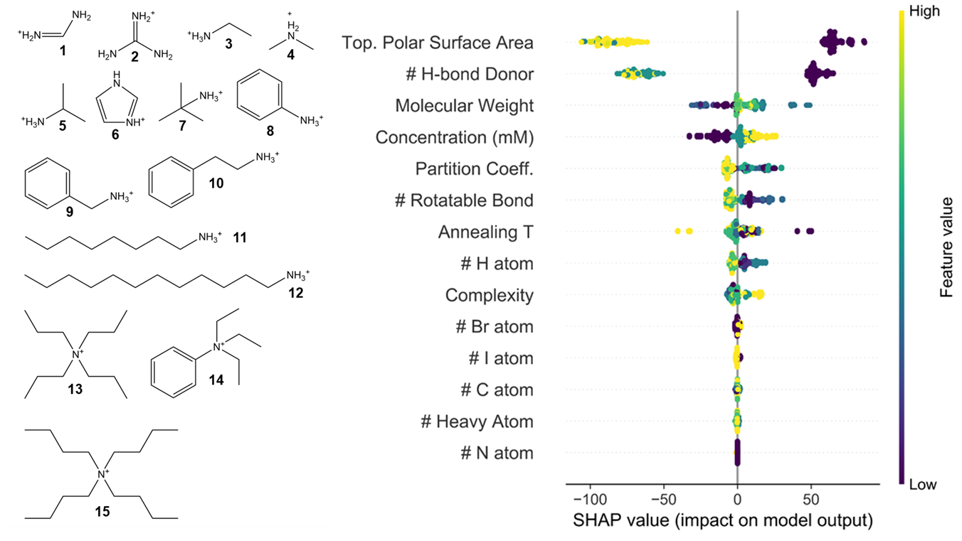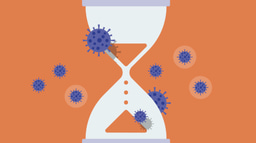Interpretable ML assists the design of new protective capping layers for perovskite solar materials
Published in Electrical & Electronic Engineering

‘It is nice to know that the computer understands the problem. But I would like to understand it too.’
——Eugene Wigner
Modern machine learning (ML) techniques are often criticized because of their black-box nature when scientists apply them to predict structure-function relationships of new materials. We came across this challenge in the search of new capping layer materials to protect our perovskite solar cells against heat and moisture-induced degradation. In our recent Nature Communications article, we introduce an interpretable machine-learning framework that not only suggests which material is most effective at improving perovskite stability, but also why.
Recent studies show that solar cell stability can be improved by ‘capping,’ where organic halides are deposited atop perovskite photoabsorbers, forming a layer of low-dimensional perovskite network with intercalated organics. The choice of organic halides is known to affect device stability, but the relationship between molecular structure and perovskite stability has not been fully explored. The vast parameter space makes state-of-the-art trial-and-error experimentation very inefficient.

We first employ a supervised-learning algorithm to predict perovskite stability performance based on the choice of organic halides. As model inputs, we include structural and chemical features of the organic molecules in the capping layers, derived from the PubChem 2019 database, as well as 12 processing conditions for each candidate. As model output, we use degradation onset and rate derived from accelerated thin-film aging tests under elevated temperature, humidity, and illumination. Based on six machine-learning models, including linear regression, K-nearest neighbors (KNN), random forest regression, gradient boosting regression with decision trees, neural network (multilayer perceptron), and support vector regression (SVR), we identify the top candidate, PTEAI (phenyltriethylammonium iodide) out of 21 candidates, leading to an improvement of stability lifetime by 4±2 times over the bare perovskite photoabosrber, methylammonium lead iodide, and 1.3±0.3 times over state-of-the-art octylammonium bromide (OABr).
To understand why PTEAI is the top-performing candidate, i.e., which molecular features of the phenyltriethylamine molecule play a dominant role in stabilizing perovskites, we use a prediction explanation technique, SHapely Additive exPlanations (SHAP) to perform an input-feature importance ranking. SHAP assesses which input variables have the greatest effect on stability, utilizing game theory to calculate the contribution of each feature to the model’s output. We find that the most important properties extending the degradation onset are (i) the low number of hydrogen-bond donors and (ii) the small topological polar surface area of the organic capping layer molecules. Further advanced characterization indicates that PTEAI protects the perovskite absorber by changing the lead surface chemistry and suppressing methylammonium loss.
Through this study, we demonstrate the application of interpretable machine-learning techniques to evaluate the structural feature importance of organic molecules, which in turn assists the design of new capping-layer materials for perovskites. We envision that the recent and ongoing advancement in the explainability of ML algorithms will open new avenues for accelerated scientific discovery via machine-learning-assisted design strategies.
If you are interested in our work, please check out our paper published in Nature Communications following the link: https://www.nature.com/articles/s41467-020-17945-4
Cover image by John Freidah.
Follow the Topic
-
Nature Communications

An open access, multidisciplinary journal dedicated to publishing high-quality research in all areas of the biological, health, physical, chemical and Earth sciences.
Related Collections
With Collections, you can get published faster and increase your visibility.
Women's Health
Publishing Model: Hybrid
Deadline: Ongoing
Advances in neurodegenerative diseases
Publishing Model: Hybrid
Deadline: Dec 24, 2025






Please sign in or register for FREE
If you are a registered user on Research Communities by Springer Nature, please sign in